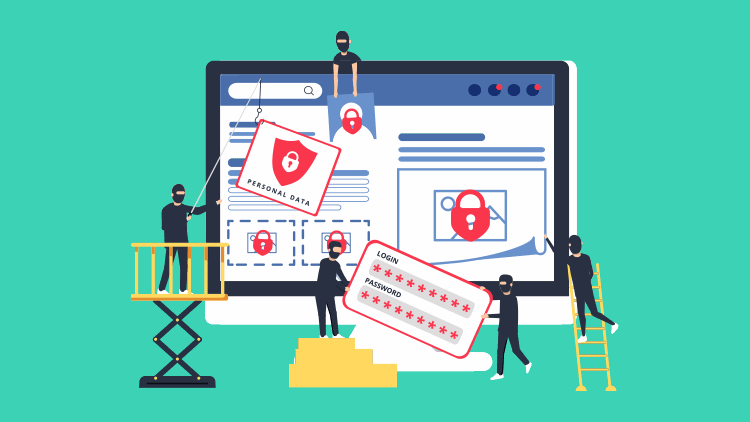by Ameritax | Aug 26, 2021 | Tax Tips and News
As more employers utilize the employee retention credit to keep their workers employed—and as the pandemic continues to be a factor in American business—the Internal Revenue Service continues to issue guidance on who qualifies for the credit and how best to apply it.
The latest round of guidance from the IRS includes clarification for employers who pay qualified wages after June 30, 2021, and before Jan. 1, 2022; as well as instructions on various issues that apply to the credit in 2020 and 2021.
The IRS also declared a safe harbor that allows employers to exclude certain items from gross receipts only for the purpose of determining their eligibility for the employee retention credit.
Changes were made to the employee retention credit by the American Rescue Plan Act of 2021 (also known as ARP), and are outlined in Notice 2021-49. These changes apply to the third and fourth quarters of 2021 and include:
- Making the credit available to eligible employers who pay qualified wages after June 30, 2021, and before Jan. 1, 2022.
- Expanding the definition of eligible employer to include recovery startup businesses.
- Modifying the definition of qualified wages for severely financially distressed employers.
- Providing that the employee retention credit does not apply to qualified wages considered as payroll costs in connection with a shuttered venue grant or a restaurant revitalization grant.
The IRS also uses Notice 2021-49 to answer various questions that have arisen about applying the employee retention credit for tax years 2020 and 2021.
These issues include:
- The definition of full-time employee and whether that definition includes full-time equivalents.
- The treatment of tips as qualified wages and the interaction with the credit for portion of employer Social Security taxes paid with respect to employee cash tips.
- The timing of the qualified wages deduction disallowance and whether taxpayers that already filed an income tax return must amend that return after claiming the credit on an adjusted employment tax return.
- Whether wages paid to majority owners and their spouses may be treated as qualified wages.
The safe harbor feature is set forth in Revenue Procedure 2021-33 and allows employers to exclude some amounts from gross receipts—but only for the purpose of determining whether they qualify for the employee retention credit.
Eligible items that may be excluded are the amount of the forgiveness of a Paycheck Protection Program (PPP) loan; Shuttered Venue Operators Grants under the Economic Aid to Hard-Hit Small Businesses, Non-Profits, and Venues Act; and Restaurant Revitalization Grants under the American Rescue Plan Act of 2021.
Applying the safe harbor couldn’t be easier: the employer has only to exclude these amounts when calculating their quarterly eligibility for the credit on their employment tax return.
Employers who are eligible for the credit must report their total qualified wages and the related health insurance costs that go along with them on their employment tax returns. Usually, Form 941, Employer’s Quarterly Federal Tax Return is used.
If a reduction if the employer’s employment tax deposits isn’t enough to cover the credit, the employer can file Form 7200, Advance Payment of Employer Credits Due to COVID-19, to qualify for an advance payment from the IRS.
For more information on the Employee Retention Credit, see these resources from the Internal Revenue Service:
Source: COVID Tax Tip 2021-123
– Story provided by TaxingSubjects.com
by Ameritax | Aug 26, 2021 | Tax Tips and News
Impersonating the Internal Revenue Service is big business for identity thieves. These phishing scams often combine fear of the agency with urgency (and threats), and those who fall for them can soon find their information or money stolen. That’s why the IRS this week highlighted how they communicate with taxpayers.
Generally, the IRS provides tips for figuring out if a phone call, letter, email, or text message is a phishing scam. Those signs can be specific to the particular scam or common amongst them all, and learning to spot phishing is one of the best ways to protect your information. Another key component is knowing how government agencies like the IRS actually contact Americans.
How will the IRS contact me?
Typically, the first communication sent by the IRS is a letter. There are myriad tax-related reasons someone might receive a letter from the IRS, and some letters will require follow-up by an agent: usually a phone call to “confirm an appointment or to discuss items for a scheduled audit.”
However, there are times when an IRS representative needs to show up in-person to talk to an individual taxpayer or business owner. According to the IRS, these “unannounced visits” are primarily “to discuss taxes owed, delinquent tax returns, or a business falling behind on payroll tax deposits.” And they may even ask the taxpayer to pay back taxes (more on that in a moment).
As for digital communication, IRS representatives may occasionally email taxpayers—but the agency stresses that’s not how they “normally initiate contact.”
How won’t the IRS contact me?
The IRS does not send texts or social media messages to taxpayers, period. That means any private messages you receive on Facebook, LinkedIn, Twitter, Instagram, or TikTok are not from the IRS.
What should I do if I think an IRS message is a phishing scam?
If you suspect an IRS letter is fake, you can check it against the list of legitimate letters and notices on IRS.gov. The “Understanding Your IRS Notice or Letter” page features a search tool that contains most letters and notices issued by the agency—some of which even have sample PDFs. When a letter doesn’t appear in the search, the IRS suggests calling 800.829.1040 to speak with an IRS representative.
An in-person visit from the IRS may sound stressful, but there are a couple ways you can determine if the person on your doorstep is the genuine article:
- IRS representatives can always provide two forms of official credentials: a pocket commission and a Personal Identity Verification Credential
- Payment will never be requested to a source other than the U.S. Treasury
Finally, the IRS stresses that you simply should not reply to emails and social media messages, even if they look and sound official. Remember, phishing scams want your personal information, and they’re good at getting tricking people into providing it once they establish a back-and-forth conversation.
(While not explicitly included in this press release, it’s also important to remember to never reflexively click on attachments and hyperlinks in digital messages. These can contain malware or take you to a fake website that is built to steal your information.)
To read the full press release, check out the source link below.
Source: IRS Tax Tip 2021-124
– Story provided by TaxingSubjects.com
by Ameritax | Aug 25, 2021 | Tax Tips and News
A new feature just added to the IRS’ Child Tax Credit Update Portal allows users receiving the advance credit payments to change their mailing addresses. The Internal Revenue Service says this should speed up the process for taxpayers who get their advance payments by paper check, heading off late-arriving checks or even having a check returned as undeliverable.
For new addresses to take effect by the time September payments are sent on the 15th, address changes have to be posted on the portal before midnight Eastern Time on Monday, August 30.
Taxpayers can still make changes after the August 30 deadline, but that change won’t take effect until the following monthly payment in October.
Stay current with the IRS
When the Child Tax Credit Update Portal is used to change a taxpayer’s mailing address, the IRS then uses the new address for all future correspondence. As we mentioned, this can be important for taxpayers who get their advance credit payments by paper check in the mail, but others benefit from having current addresses on file as well.
The IRS says it will mail a year-end summary—Letter 6419—to all the taxpayers who received advance Child Tax Credit payments in 2021. For this summary to reach the correct taxpayers, it’s vital that these families give their correct mailing addresses to the IRS.
Letter 6419 is important to these families because they’ll need the letter when they fill out their 2021 income tax return next year.
Since in most cases, families will receive only half of their available credit through the advance payments, taxpayers will have to claim the remaining credit on their 2021 return – and that’s where Letter 6419 comes in.
Even more features coming to the portal
The Internal Revenue Service says it’s continuing to develop the Child Tax Credit Update Portal to better serve the needs of taxpayers. The portal, which is available only on IRS.gov, already allows taxpayers to verify eligibility for the advance Child Tax Credit. Once verified, users can choose to:
- Switch from receiving a paper check to direct deposit;
- Change the account where their payment is direct deposited; or
- Stop monthly payments for the rest of 2021.
Features of the Child Tax Credit Update Portal, however, won’t stop there. The IRS says it’s working on features that will allow users to add or remove children in most situations, to report a change in marital status, and to report a significant change in income.
For the latest information on the Child Tax Credit and its advance payments, see the IRS’ special Advance Child Tax Credit 2021 web page at IRS.gov/childtaxcredit2021.
The web page has updated frequently asked questions and Publication 5549, IRS User Guide: Child Tax Credit Update Portal, along with direct links to the portal and to the Non-Filer Sign Up Tool and the Child Tax Credit Eligibility Assistant.
Source: IR-2021-171
– Story provided by TaxingSubjects.com
by Ameritax | Aug 23, 2021 | Tax Tips and News
Long-haul truckers and others who own heavy highway motor vehicles are running out of time to file their federal highway use tax return by August 31.
The heavy vehicle use tax is levied on vehicles with a taxable gross weight of 55,000 pounds or more that operate on public highways. Tuesday, August 31, is the deadline to file and pay.
Taxpayers who own 25 or more taxed vehicles are required to e-file their Form 2290 returns. All others are advised by the IRS to e-file as well, since that is the fastest and easiest method.
Check the Trucking Tax Center for the latest filing requirements and other information.
Details are Important for Filing Successfully
Before filing Form 2290 for the heavy vehicle use tax, taxpayers first need to gather their information:
- Remember that an Employer Identification Number (EIN) is required. Taxpayers cannot use their Social Security number. Anyone who doesn’t have an EIN, however, can apply for one online. Taxpayers should use the same name on their Form 2290 as was assigned to them with their EIN. The name control on Form 2290 must match their EIN.
- Taxpayers will need the vehicle identification number (VIN) of each vehicle being listed.
- Taxable gross weight of each vehicle. Filers can use the table on page 2 of the Form 2290 to calculate their tax for vehicles based on each vehicle’s weight.
Taxpayers can file Form 2290 in one of two ways.
As mentioned, e-filing offers faster processing. The IRS provides a watermarked Form 2290 Schedule 1 to taxpayers within minutes of receiving the e-filed return. By contrast, taxpayers who filed paper Forms 2290 could wait as long as six weeks before getting their Schedule 1 in the mail.
Although slower, paper filing remains an option for taxpayers. Once the paper Form 2290 is complete, it is mailed to the IRS. Filers should refer to the Form 2290 instructions for the correct mailing address.
Taxpayers also have options on methods to pay the heavy vehicle use tax. These include:
Internal Revenue Service
P.O. Box 932500
Louisville, KY 40293-2500
Some taxpayers may not be sure their vehicle qualifies for the heavy highway vehicle use tax or not. They can use the Do I Need to Pay the Heavy Highway Vehicle Use Tax? tool to find out. The tool uses a series of questions to determine if the taxpayer is required to pay the use tax.
Source: Truckers must pay heavy highway vehicle use tax by August 31
– Story provided by TaxingSubjects.com
by Ameritax | Aug 19, 2021 | Tax Tips and News
The tax industry partners who make up the Security Summit are urging practitioners to take a page out of the medical books in order to keep their computer systems healthy: to cure an infection, you first have to know your patient is sick.
In other words, tax pros have to know the signs of data theft if they expect to move quickly to protect their clients.
The Security Summit, which is comprised of IRS officials, state tax agency representatives, and tax industry leaders, says time is critical when there’s a question of identity theft surrounding their data systems. That means immediately contacting the IRS if there’s evidence their data has been compromised, and enlisting insurance or cybersecurity experts to help determine the cause and extent of a possible loss.
“There are tell-tale signs of identity theft that tax pros can easily miss,” said IRS Commissioner Chuck Rettig. “Identity thieves continue to look for ways to slip into the systems of tax pros to steal data. We urge practitioners to take simple steps and remain on the lookout for signs of data and identity theft. They are a critical first line of defense against identity theft.”
Security Summit partners have adopted the theme “Boost Security Immunity: Fight Against Identity Theft,” aimed at urging tax pros to try harder to secure their systems and protect client data. This is reflected by a common comment from tax pros to IRS investigators after data theft: They didn’t immediately recognize the signs they’d been compromised.
What are the signs of possible data theft?
Tax professionals should know the critical signs of data theft:
- Client e-filed returns rejected because client’s Social Security number was already used on another return.
- More e-file acknowledgements received than returns the tax pro filed.
- Clients responded to emails the tax pro didn’t send.
- Slow or unexpected computer or network responsiveness such as:
- Software or actions take longer to process than usual;
- Computer cursor moves or changes numbers without touching the mouse or keyboard;
- Users unexpectedly locked out of a network or computer.
Sometimes, the signs of data theft come to the tax pro from their clients. These “red flags” may come in the form of IRS Authentication letters (5071C, 4883C or 5747C), even though the client hasn’t filed a return. Other signs are a refund when the client hasn’t filed, or a tax transcript they didn’t request.
More warning signs can include:
- Emails or calls from the tax pro that they didn’t initiate.
- A notice that someone created an IRS online account for the taxpayer without their consent.
- A notice the taxpayer wasn’t expecting that:
- Someone accessed their IRS online account; or
- The IRS disabled their online account.
There could, of course, be other examples. Data thieves are a relentless and creative lot. This means tax professionals should have the highest security possible and should not hesitate to contact authorities if they suspect or find something that isn’t right.
What should I do if my data is stolen?
There are steps that tax professionals can take if they—or their office—fall victim to a data theft. But speed is critical; these steps should be taken immediately to mitigate further damage.
Report the theft to the local IRS Stakeholder Liaison.
Liaisons notify IRS Criminal Investigation and other agency officials on behalf of the tax pro. The IRS can take steps to block fraudulent returns in the clients’ names and assist the local practitioner through the process. But speed is vital; data theft must be reported quickly.
Email the Federation of Tax Administrators at [email protected].
This will get the tax pro information on how best to report the facts of the data theft to their particular state. According to the IRS, most states require that the state attorney general should be notified of data breaches and in some states, this could involve multiple state offices.
For more information on reporting a breach, see Data Theft Information for Tax Professionals.
For help with security recommendations, tax professionals can look over IRS Publication 4557, Safeguarding Taxpayer Data, which has been recently updated. Another good source is Small Business Information Security: The Fundamentals from the National Institute of Standards and Technology.
On the IRS website, IRS.gov, their Identity Theft Central pages have additional details targeting tax professionals, businesses and individuals. Also on IRS.gov, Publication 5293, Data Resource Guide for Tax Professionals, has a full set of compiled numbers on data theft.
Source: IR-2021-170
– Story provided by TaxingSubjects.com






 Ameritax
Ameritax